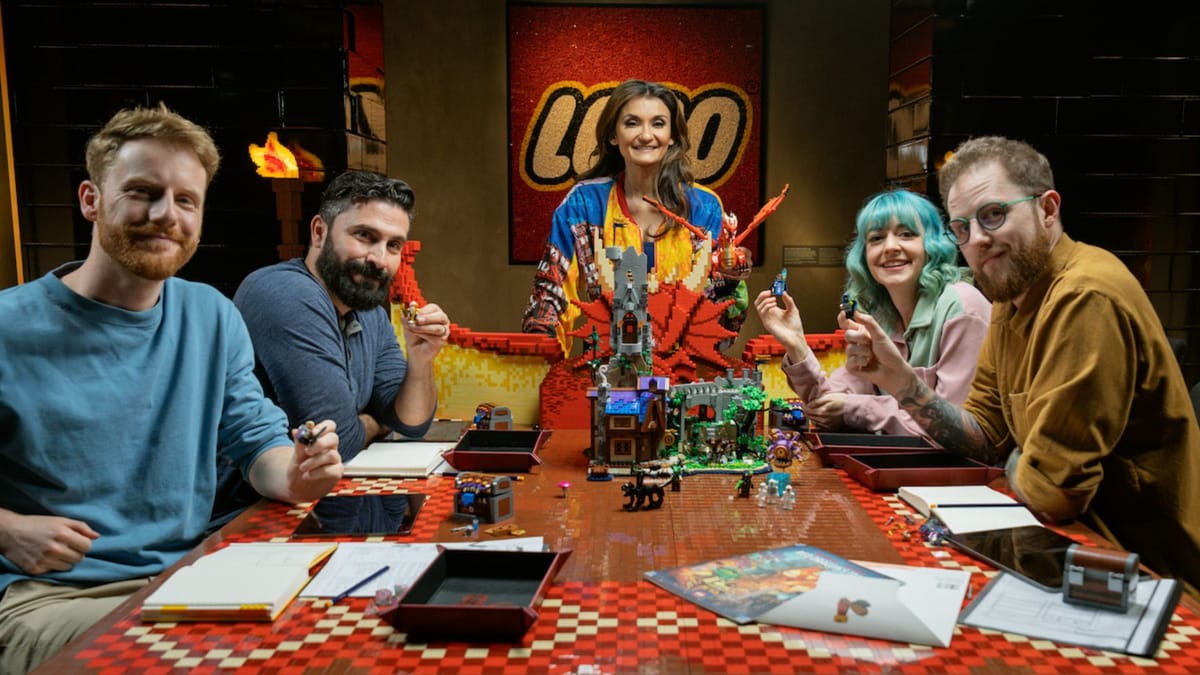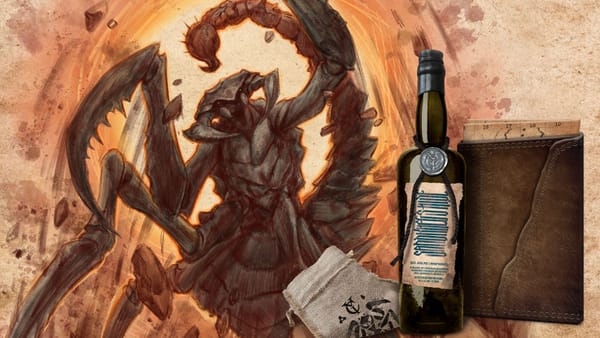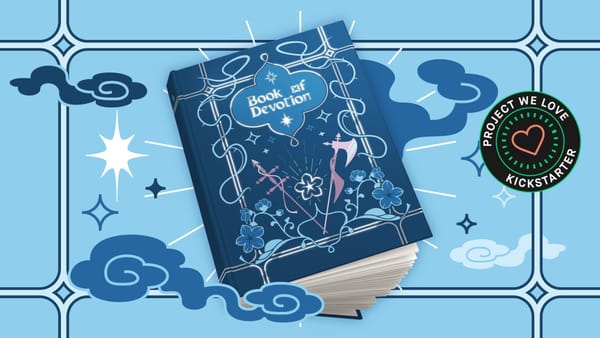The LEGO D&D special is pure marketing, but at least it’s good marketing
The special invites newcomers to tabletop and actual play, doing some good, some bad, and a little capitalism along the way (as a treat)

Few brands represent the infinite possibilities of childlike play as much as Hasbro and LEGO. GMs of all ages have combined the colorful bricks and minifigures as physical tools during play for decades, but the brands have only just launched their first official collaboration with a D&D-branded LEGO set, Red Dragon’s Tale, on March 19th. While the set (which retails for $360 dollars) is currently on backorder, on April 6th Hasbro premiered LEGO Dungeons & Dragons Game Night, a three-hour long actual play special.
And as much as it pains me to say, I really enjoyed watching it.
Not only is the LEGO Special a well-produced actual play specifically meant to reach new potential fans of the medium, it also discusses some fundamental questions about the cultural assumptions surrounding Dungeons & Dragons. Red Dragon’s Tale uses all the trapping and techniques of AP to evoke a nostalgic version of play that’s more accessible and palatable to a wider audience—the LEGO audience, specifically. Though the special succeeds in crafting a light, joy-filled fantasy adventure, it does so as a means to the inevitable end of expanding the two company’s consumer base by converting brick-heads into potential buyers of the D&D Lego set.
The demographic this toy company-crossover is attempting to reach is not hardcore actual play fans, or TTRPG enthusiasts, or even children; but their overlapping profit-drivers of nostalgic 30-somethings with disposable income (as co-rascal Chase Carter noted in a tweet regarding promotional material for the LEGO set).
The photograph used to promote the D&D LEGO set is so interesting to me. They're all 30-somethings who dress like they have enough disposable income for hobbies.
— @chase, now at Rascal (@chasewrites) March 19, 2024
Neither company is attempting to position their toy based on a game to a younger audience, much less actual children. pic.twitter.com/CSaQ1k64AR
While I’ve written before about my distaste of large publishers and studios using actual play primarily as a marketing tool, LEGO Dungeons & Dragons Game Night is what can happen when companies hire creatives who clearly care about their craft, even in service of very visible marketing. However, it’s important to remember any nostalgic, feel-good PR Hasbro has done is colored by its own scandals, along with large financial connections to gameswashing attempts from the Public Investment Fund of Saudi Arabia. Both LEGO, which has a flagship location in the country, and Dungeons & Dragons are associated with the PIF. Marketing events like this often do a good job of conveniently getting consumers to forget a company’s more ethically unsound endeavors. To quote comedian Xave Padin, “marketing is evil storytelling.”
If done well, the framework of an advertisement is no different from a work of art. It builds on existing artistic traditions, aims to evoke a specific emotion and experience, and if done successfully, imparts a lasting message to its audience—typically: Buy This Product. The primary objective of the special is to convince the viewer to purchase the D&D LEGO set, but the creative team behind this project clearly worked hard to provide something worthwhile and fun for any potential member of their audience: an intersection of LEGO hobbyists, D&D players, and actual play fans who follow one or more members of the cast.
When major corporations culturally and financially capitalize on an insular, rapidly-growing industry heavily populated by independent artists, it feels slightly less insulting if their budgets are used to produce something so good they create new fans of the artform, even if that wasn’t their intention.





